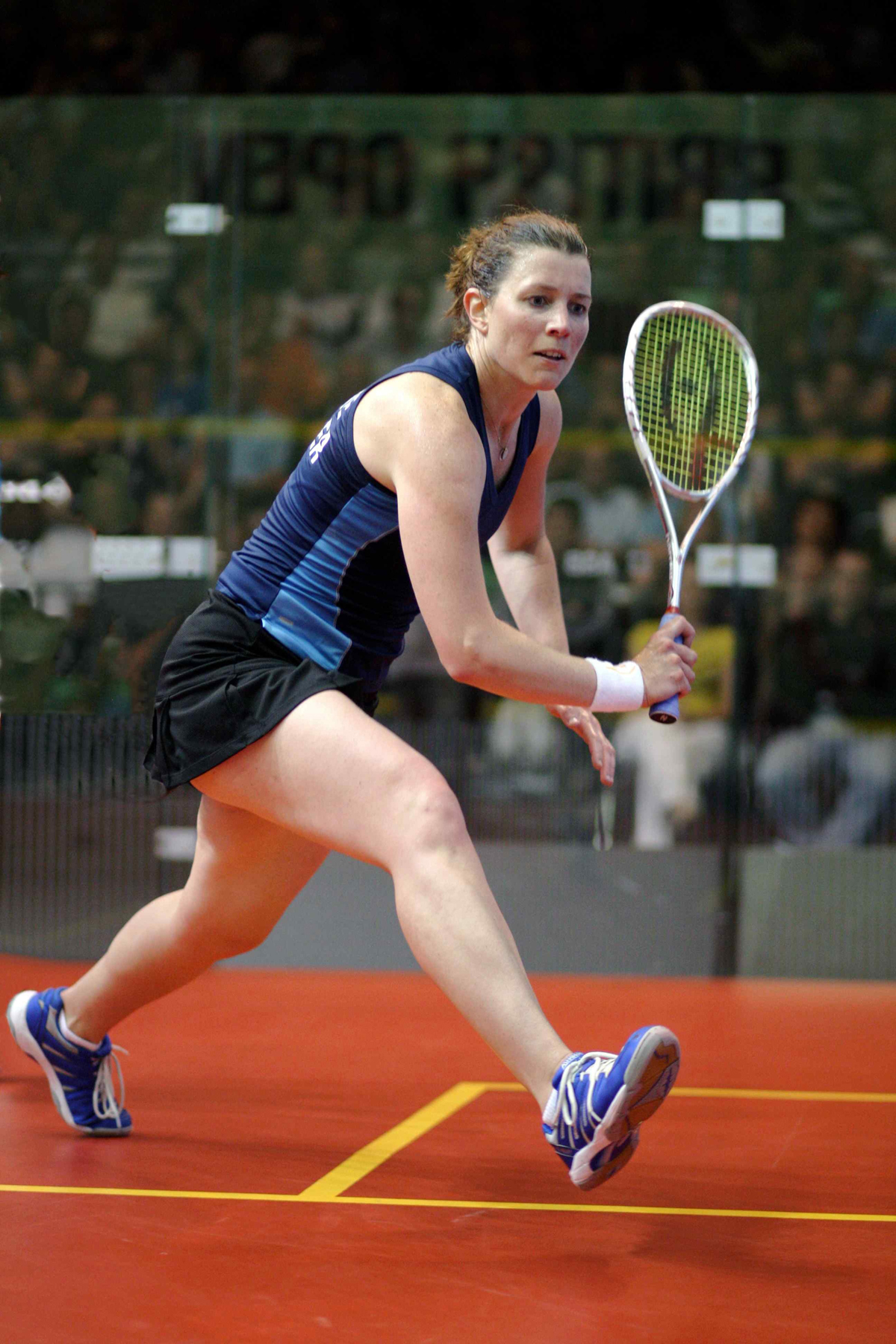By Steve Crandall
Vice President, Sales & Marketing
Ashaway Racket Strings
In our July/August column, we talked with WISPA great Natalie Grainger about her game and her stringing preferences. In that same conversation, we got the distinct impression (it was subtle, like a cheering crowd) that Natalie was a hardball doubles fan. So, as hardball doubles continues to gain popularity in the US, we thought it might be interesting to hear what she had to say. Here is part of our conversation:
Ashaway: How involved are you in hardball doubles?
Grainger: I’m playing quite a lot of hardball doubles now. I won the Canadian and the American National Doubles Championships with my partner Jessica Dimauro, and I’ve played in some of the WDSA (Woman’s Doubles Squash Association) events, and now that I’ve moved here to Connecticut, I’m picking up a lot more hardball games. Of course, my main priority still is my squash career on the WISPA tour, but I really love hardball. I’m hoping this season I might play some men’s ISDA doubles (International Squash Doubles Association) events.
 Ashaway: What’s the attraction?
Ashaway: What’s the attraction?
Grainger: Well, I get to have some fun, be sociable. The doubles events seem to have a little less edge about them, the players are not having to train the same way as the squash players are on the world tour. They’re great athletes, but at the same time it’s a little bit more friendly and a little bit more easygoing. You get to spend a lot of time with the members and have some fun with people. Four players on a court as opposed to just the two pitted against each other, so that’s always good fun.
Ashaway: Is that a function of the game or simply the lack of pressure?
Grainger: I think there’s a couple things. One, the players. Take the ISDA (International Squash Doubles Association) tour for instance now, a lot of those guys have either retired, they’ve got jobs as professionals in clubs, they’re not training the same way they might have done, or some of them might never have done that kind of training. The players themselves are not as serious in what they do, and perhaps are financially a little more stable.
The other thing is, since it is only played here in the US, there is much more of a community. All the pros know each other pretty well, so it’s a friendly environment. The Pro-Am events are a classic example of why it’s a little bit more easygoing, friendly. You’ve got these pros playing with amateurs, the pros are looking to give the amateurs a good time, play as hard as they can for them, try and win for them. But it’s not like they’re pitted against each other, so it’s fun.
Ashaway: How about the game itself?
Grainger: It is a very highly skilled game, and it’s fast. The ball flies so much faster, you have to have really quick hands. The swings are a lot shorter and use a lot of power, so it takes a lot of skill to control that ball. And it’s high paced, so you can really jump on the ball. Because of its hardness, the ball spins a lot, and the way it grips the walls makes it spin quite funny sometimes as well, so you can throw in corkscrews and Philadelphias, and things that suck into the back corners. Plus, it’s a game of strategy. That court is so big that you are trying to out-maneuver someone from the opposing team, but because of the area you have to cover, you just can’t get to certain balls.
Ashaway: What about string? We’ve heard that because the ball is heavier, there is a lot more breakage and that higher tension is advised. Do you agree with that?
Grainger: Absolutely. You see more breakage, you’re whaling on that ball so much more. I string my racquets much tighter as well, probably at 32, 33, and because it is a power game and the ball flies, you need to have that string really tight, so that you can generate real pace and power. Also, when you’re shooting it in on the doubles court, you don’t want it to pop up, like on a softball court. The soft ball is spongier, so you can slice the ball in and it’ll stay down. On the doubles court, if you come in under the ball a bit, it pops on a doubles court, which is horrendous because someone can come in and absolutely smash it. So a string with good grip also helps because you can punch through the ball when you’re going short and get more bite on it.
Ashaway: Do you use a different string for hardball?
Grainger: No, I use SuperNick® XL Micro for both—the 18 gauge—and I just change the tension. For softball I’m around 26 or 27. That’s a big difference.
Ashaway: Where do you see hardball doubles going in the future?
Grainger: Well, hardball doubles is a very exciting game to watch, so I’d love to see it grow. But building a hardball doubles court is expensive and no one plays it unless they’ve come here to the States and seen it. So I think it’s a tough battle, in terms of the practicality. But it would be nice to see it grow here in the States as it’s a really wonderful game, a lot of fun and very sociable. It’s a good game for people that are maybe learning the game and are not interested in having to work so hard as on a softball court. They can come down and get exercise that’s reasonable, and it doesn’t kill them, and they get to have some fun and play the game they enjoy.


